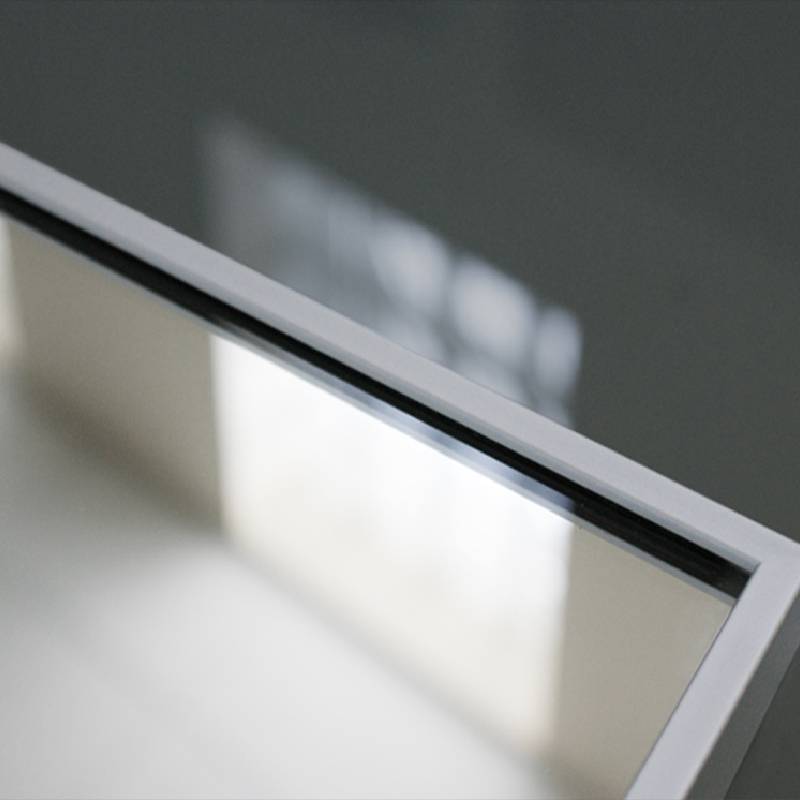

The Surface Silvered Mirror An Exploration of Reflection and Artistry
The surface silvered mirror has been an essential object in both practical use and artistic expression for centuries. Its history, invention, and evolution reflect not only technological advancements but also cultural shifts and aesthetic preferences throughout time. In this article, we will explore the origins, manufacturing processes, applications, and artistic significance of surface silvered mirrors.
Origins and Historical Context
The history of mirrors dates back to ancient civilizations, where polished stones such as obsidian were utilized for reflection. However, the true evolution of mirrors began in the early 19th century with the advent of silvering—a method that revolutionized the quality and clarity of mirrors. The process of surface silvering involves depositing a thin layer of metallic silver onto glass, significantly enhancing the reflectivity compared to earlier materials.
The innovation was pioneered by German chemist Justus von Liebig in the 1830s, introducing a method that used a solution of silver nitrate. This process allowed for the mass production of mirrors, making them accessible to a broader audience and paving the way for their incorporation into everyday life as well as art.
Manufacturing Process
The surface silvering process consists of several critical steps. First, a piece of clear glass is thoroughly cleaned to remove any impurities that could affect the final reflection. Next, a liquid silvering solution is prepared, typically composed of silver nitrate, ammonia, and distilled water. This solution is then carefully applied to the glass surface, often using a spray or brush method.
As the solution interacts with the glass, a chemical reaction occurs, reducing the silver ions to metallic silver, which bonds to the glass surface. Once the silver layer is applied, it is often finished with a protective paint layer to prevent tarnishing and enhance durability. This meticulous process ensures that the mirror not only reflects images clearly but also stands the test of time.

Applications in Daily Life
Surface silvered mirrors are ubiquitous in modern life, found in homes, offices, and public spaces. Their primary function is to reflect light, giving depth and dimension to rooms while enhancing the natural light available. Beyond their practical uses, mirrors also serve to create illusions, making spaces appear larger and more open.
In the realm of fashion and beauty, surface silvered mirrors hold a special significance. They are essential tools in personal grooming, allowing individuals to assess their appearance and make adjustments. The vanity mirror, often embellished with ornate designs, symbolizes self-reflection and beauty, bridging the gap between functionality and aesthetics.
Artistic Significance
Throughout history, surface silvered mirrors have also played a pivotal role in the world of art. Artists have been fascinated by the reflective quality of mirrors, using them as tools for exploration and expression. The use of mirrors in paintings, such as those by the Dutch Masters, provided a unique method to capture light and create depth. These reflections can challenge perceptions of reality, drawing viewers into a complex interplay between the real and the reflected.
Contemporary artists continue to experiment with the concept of mirrors in their work. Installations featuring mirrors can create immersive environments, forcing the audience to confront their image and identity. Artists like Anish Kapoor and Yayoi Kusama utilize reflective surfaces as a means to explore themes of infinity, perception, and the self. These modern interpretations highlight the ongoing dialogue between technology, art, and the human experience.
Conclusion
The surface silvered mirror, a fusion of science and art, encapsulates a rich history while serving a multitude of functions in contemporary society. Its journey from ancient polished stones to modern silvered glass reflects not only advancements in craftsmanship but also the intrinsic human desire for reflection—both literal and metaphorical. As we continue to innovate and explore the possibilities of this remarkable object, the surface silvered mirror will undoubtedly remain a significant part of our cultural and artistic landscape, inspiring and challenging our perceptions for generations to come.